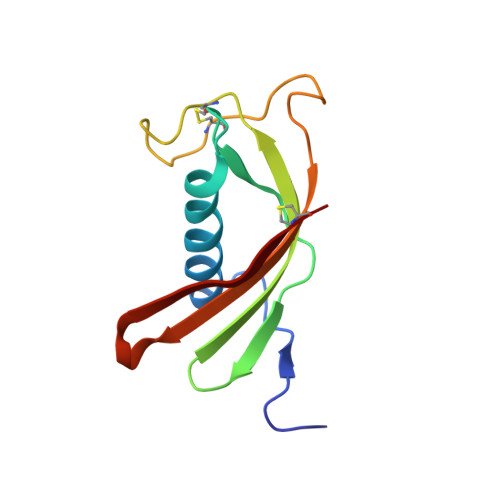Structural basis for unique mechanisms of folding and hemoglobin binding by a malarial protease.
Wang, S.X., Pandey, K.C., Somoza, J.R., Sijwali, P.S., Kortemme, T., Brinen, L.S., Fletterick, R.J., Rosenthal, P.J., McKerrow, J.H.(2006) Proc Natl Acad Sci U S A 103: 11503-11508
- PubMed: 16864794
- DOI: https://doi.org/10.1073/pnas.0600489103
- Primary Citation of Related Structures:
1YVB - PubMed Abstract:
Falcipain-2 (FP2), the major cysteine protease of the human malaria parasite Plasmodium falciparum, is a hemoglobinase and promising drug target. Here we report the crystal structure of FP2 in complex with a protease inhibitor, cystatin. The FP2 structure reveals two previously undescribed cysteine protease structural motifs, designated FP2(nose) and FP2(arm), in addition to details of the active site that will help focus inhibitor design. Unlike most cysteine proteases, FP2 does not require a prodomain but only the short FP2(nose) motif to correctly fold and gain catalytic activity. Our structure and mutagenesis data suggest a molecular basis for this unique mechanism by highlighting the functional role of two Tyr within FP2(nose) and a conserved Glu outside this motif. The FP2(arm) motif is required for hemoglobinase activity. The structure reveals topographic features and a negative charge cluster surrounding FP2(arm) that suggest it may serve as an exo-site for hemoglobin binding. Motifs similar to FP2(nose) and FP2(arm) are found only in related plasmodial proteases, suggesting that they confer malaria-specific functions.
- Department of Pathology and the Sandler Center, San Francisco General Hospital, University of California, CA 94143, USA.
Organizational Affiliation:


















